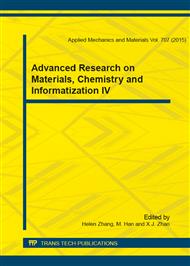[1]
Liu Hai-meng, ShiPei-ji, Wanglu-cang, Optimizing Land Use Structure for Low Carbon Target : A Case Study in Lanzhou of Gansu Province, J. China Land Science, 2012, 26(6): 55-61.
Google Scholar
[2]
Houghton R A, The Annual Net Flux of Carbon to The Atmosphere from Changes in Land Use 1850-1990, J. Tellus Series B-Chemical and Physical Meteorology, 1999, 51(2): 298-313.
DOI: 10.3402/tellusb.v51i2.16288
Google Scholar
[3]
Houghton R A, Hackler J L, Sources and Sinks of Carbon from Land-use Change in China, J. Global Biogeochemical Cycles, 2003, 17(2): 1034-1047.
DOI: 10.1029/2002gb001970
Google Scholar
[4]
Zhao Rongqin, Huang xianjin, Zhong Taiyang, Chuai Xiaowei, Carbon Effect Evaluation and Low-carbon Optimization of Regional Land Use, J. Transadions of the Chinese Society of Agricultural Engineering, 2013, 29(17): 220-229.
Google Scholar
[5]
Ge quansheng, Dai junhu, Hefan, Over the Past 300 Years, Chinese Land Use, Land Cover Change and the Carbon Cycle Research, J. Science in China(series D: Eeath Sciences), 2008, 38(2): 197-201.
Google Scholar
[6]
Xu Minyun, Li Peiguang, XieFan, Response of Siol Organic Carbon Density to Land-use Types and Management Practices Change in Agro-pastoral Zone, J. Transadions of the Chinese Society of Agricultural Engineering, 2011, 27(7): 320—325.
Google Scholar
[7]
Tan meng, Huang xianjin, Zhong taiyang, The Effects of Land Consolidation on Soil Carbon Content, J. Transadions of the Chinese Society of Agricultural Engineering, 2011, 27(8): 324—329.
Google Scholar
[8]
Yin ke, Xiao Yi. Path Selection for Low-Carbon Economic Land Use Pattern in China J. Energy Procedia, 2011, 5: 452-456.
DOI: 10.1016/j.egypro.2011.03.078
Google Scholar
[9]
Xiao zhuan, Peng huan, Path of Low-Carbon Economy of Land Use Mode Selection, J. Seeker, 2010, (4): 81—82.
Google Scholar
[10]
Zhao rongqin, Liu ying, Hao shilong, Studies of Low-Carbon Land Use Patterns, J. Research of Soil and Water Conservation, 2010, 17(5): 190—194.
Google Scholar
[11]
Koemer B, Klopatek J, Anthropogenic and Natural CO2 Emission Sources in an Arid Urban Environment, J. Environmental Pollution, 2002, 116(S): 45-51.
DOI: 10.1016/s0269-7491(01)00246-9
Google Scholar
[12]
Wang Jiali , Huang Xianjin , Zheng Zeqing, Evaluation on Relative Carbon Efficiency of Regional Planning Land use Structure, J. Transactions of the Chinese Society of Agricultural Engineering, 2010, 26(7): 302-306.
Google Scholar


